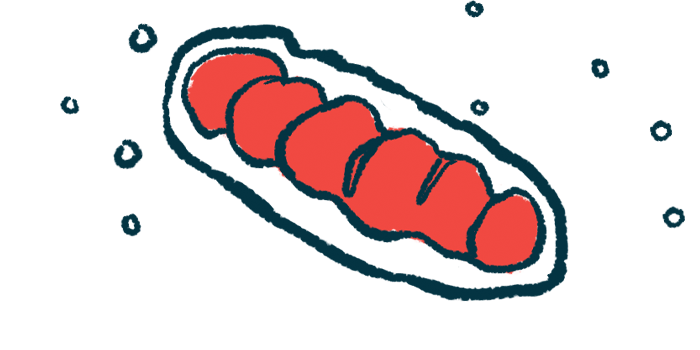Way of Identifying What Protects Frataxin May Help in Slowing FA

Levels of the protein frataxin, which are abnormally low in people with Friedreich’s ataxia (FA), are further reduced by excess iron and increased protein degradation, a study found.
Screening approved compounds in a yeast model identified those that prevented this additional frataxin loss in cells isolated from a patient, demonstrating a new way of finding and testing medicines and treatment targets that may slow FA progression.
The study, “Posttranslational regulation of mitochondrial frataxin and identification of compounds that increase frataxin levels in Friedreich’s ataxia,” was published in the Journal of Biological Chemistry.
Frataxin participates in the assembly of iron-sulfur clusters within mitochondria, playing a key role in energy generation within cells. This protein is produced at high levels in cells with high metabolic rates, such as the heart tissue.
Due to genetic defects, frataxin levels are unusually low in Friedreich’s ataxia patients, resulting in fewer iron-sulfur clusters, increased mitochondrial iron, and elevated reactive oxygen species (ROS) — the toxic free radicals that damage cells and tissues.
Previously, a team of researchers at the University of Utah School of Medicine showed that the loss of Erg29, a protein involved in fat-like sterol production in yeast, resulted in mitochondrial impairment and decreases in the protein Yfh1 — the yeast equivalent of frataxin. This finding indicated that Yfh1 loss was not due to a change in gene activity but a process that occurs after the protein was made.
These researchers now continued to investigate the post-production loss of Yfh1 and frataxin. They also screened a library of U.S. Food and Drug Administration-approved compounds for their ability to rescue yeast Yfh1, and to validate a way to identify new FA therapies and targets.
In yeast cells lacking Erg29, the half-life of mitochondrial Yfh1, meaning the time for this protein to be reduced by half, was seen to rapidly decrease. In contrast, other proteins involved in iron-sulfur cluster formation were unaffected. With the loss of Yfh1, there was a rapid increase in mitochondrial ROS.
Deleting an enzyme that degrades proteins in mitochondria then resulted in a dramatic increase in the half-life of mitochondrial Yfh1. Overproducing a protein that exports iron from mitochondria also protected Yfh1 from this enzyme degradation.
“These results support the hypothesis that Fxn [frataxin] protein levels are sensitive to mitochondrial iron accumulation and subsequent mitochondrial ROS-mediated modification that increases Fxn turnover,” the team wrote.
To test the relevance in mammalian tissue, heart muscle cells of rats (cardiomyocytes) were exposed to doxorubicin, an approved cancer medication. This caused a marked decrease in frataxin levels but not other proteins involved in iron-sulfur cluster assembly, suggesting that “the increased mitochondrial ROS in doxorubicin-treated cardiomyocytes specifically affect Fxn levels,” the team added.
Exposing fibroblast cells to excess iron led to an increase in frataxin production in healthy cells but a significant decrease in the protein in cells isolated from an FA patient. Notably, the scientists confirmed that reduced frataxin in iron-exposed FA cells was not due to less gene activity.
Further, the increase in cellular iron slightly elevated mitochondrial ROS in healthy cells but dramatically increased the ROS in FA cells. Like yeast cells, treating iron-exposed fibroblasts with a compound that blocked an enzyme that degrades proteins in human mitochondria led to a significant increase in frataxin levels. They rose to levels found in FA cells not exposed to iron.
Researchers noted that this increase in frataxin did not approach that of healthy fibroblasts due to the FA-causing mutations that reduce the protein by more than half.
Altogether, study findings suggested that stabilizing the frataxin protein may be an FA treatment strategy. Accordingly, the researchers screened a library of 2,500 FDA-approved compounds in yeast lacking Erg29 to find those that increase Yfh1 as a surrogate to frataxin in humans.
Among these, six top compounds were identified that increased Yfh1 protein levels but not the activity of the gene that codes for Yfh1. At the same time, there was an increase in the formation of iron-sulfur clusters.
In doxorubicin-treated rat heart muscle cells with low frataxin, a dose-dependent increase in frataxin was seen using the top compound called DBM. In FA fibroblasts, DBM also increased frataxin protein levels, but this increase was not due to elevated gene activity. Most of the effective compounds showed lesser mitochondrial ROS.
Lastly, experiments indicated that compounds like DBM may work by increasing the production of antioxidants that detoxify ROS and help to protect frataxin from modification and increased degradation.
“Our results demonstrate that using yeast to identify compounds that increase Fxn levels in mammalian cell culture is a viable approach to discovering novel potential therapies for the treatment of [Friedreich’s ataxia],” the researchers wrote.
In this disease, “Fxn levels are already at a critically low level, so the discovery that this level can be further reduced due to increased mitochondrial iron and ROS may provide additional guidance on therapeutic interventions to delay disease progression,” the team added.







